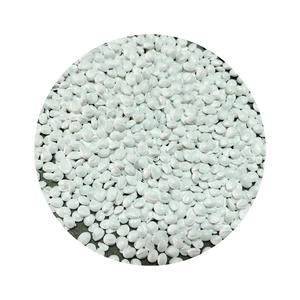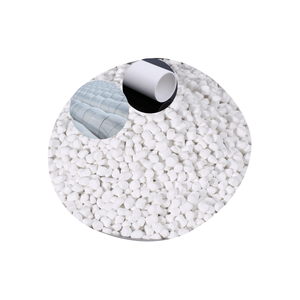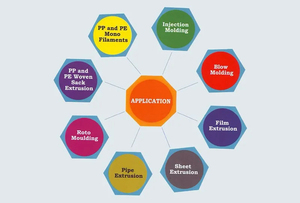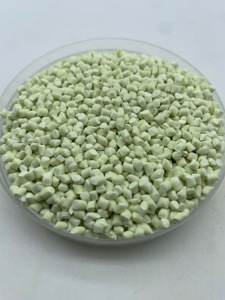
All categories
Featured selections
Trade Assurance
Buyer Central
Help Center
Get the app
Become a supplier

(972 products available)

































Antifoam masterbatch refers to a specially material additive that reduces the formation of foam in diverse materials, mainly plastics. This comes in the form of concentrated mixture or dispersion of defoaming agents in a suitable polymeric carrier. Foam formation has adverse effects on several production processes, especially in coating application. This necessitates the addition of antifoam masterbatches in materials to enhance their performance. Antifoam masterbatches are available in different types based on the plastic resins they're designed for. These types include:
Polypropylene (PP) Antifoam Masterbatch
The polypropylene antifoam masterbatch is a potent solution used in the fight against foam formation across diverse manufacturing processes. It is ideal for infusion deposition where its chemical resilience and thermoplastic attributes help in reducing surface tension and thus mold filling propensity. This significantly mitigates the occurrence of blistering and foam, improving the aesthetic finish of the product surface. Also, It ensures optimal processing during extrusion or injection molding in order to minimize counters and delays linked with excessive foaming. The addition of Polypropylene masterbatch high enhances its efficiency in this regard, providing a seamless integration with better antifoam properties.
Polyethylene (PE) Antifoam Masterbatch
Foam inhibition by the antifoam masterbatch is enhanced through the use of a polyethylene carrier. The use of PE antifoam masterbatch is ubiquitous within the flexible films arena. Here, the defoaming agents help to reduce surface tension, improving processability. In blown film extrusion and blow molding, it acts by minimizing entrapped air, leading to better product consistency. This leads to smooth film without the imperfections arising from foam blisters. Moreover, the incorporation of this masterbatch into production processes is easy and enables manufacturers to effectively tackle foam challenge with less or no impact on film quality.
Thermoplastic Elastomer (TPE) Antifoam Masterbatch
Antifoam masterbatch is suitable for thermoplastic elastomers where control of foam formation is constraining. Due to their flexibility and rubber-like properties, TPEs require a specially designed masterbatch that integrates seamlessly with their unique chemical structure. This antifoam masterbatch mitigates the occurrence of surface bubbles during molding, hence enhancing the aesthetic and functional attributes of TPE products. In applications such as seals, gaskets, and flexible membranes, surface defects foaming correction leads to improved performance and the increase in product lifetime. In addition, the incorporation of silicone antifoam acts as a potent weapon against foam in TPE production.
PVC Antifoam Masterbatch
A PVC antifoam masterbatch is a critical component in the manufacture of foamsafe rigid and flexible polyvinyl chloride formulations. The defoaming agents encapsulated in the masterbatch work to counteract the foam blisters that arise during the processing of PVC. These agents come in handy, especially in extrusion and injection molding, where excessive foaming can lead to surface defects and reduce the quality of the end product. This masterbatch ensures a smoother processing sequence and a more aesthetically appealing and structurally sound product devoid of defects.
High-Density Polyethylene (HDPE) Antifoam Masterbatch
HDPE masterbatch has a potent antifoam masterbatch that is developed for high-density polyethylene applications. Particularly in film production and injection molding, foam reduction is critical in surface quality attainment. This specialized masterbatch effectively reduces surface tension, leading to a significant reduction in entrapped air and hence surface appearances devoid of defects. Its incorporation into HDPE processes enhances product durability while maintaining crystal clear quality without compromising on processing efficiency.
A typical defoaming masterbatch is detailed with several key elements that determines its effectiveness. These elements include:
Defoaming agent concentration
Every defoaming masterbatch has a special formulation that incorporates a defoaming agent or a blend of several agents in concentration best suited to the intended application. These active ingredients are the bubble killers and come in diverse forms. Silicone oils, for instance, work best in their ability to penetrate the surface of the bubbles during formation. It then weakens the surface tension of the bubble film leading to its eventual rupture. On the other hand, mineral oils which mainly consist of dimethicone also disrupt the foam film structure. Surfactants on the other hand, lower the surface tension of water and thus mitigate the foam formation. What is critical, however, is that the concentration of these agents shall not only be high enough to be effective but also low enough not to hinder product quality nor add on the heaviness of the masterbatch.
Material compatibility
A quality defoaming masterbatch is stand to be compatible with a given base material. This can be polymers within the plastic industry or even paints and coatings. The defoaming agents should chemically react with the material. This leads to separation or the formation of undesirable compounds. Thus, the chosen agents must have affinity with the hosting material for effective dispersion and active intervention. Additionally, compatibility ensures that when the defoaming effect is achieved, no adverse effect on physical properties corrosion such as tensile strength, elasticity or chemical resistance.
Dispersion quality
Another differentiating factor that quality is seen in the homogeneity of the masterbatch formulation. A masterbatch of high quality is characterized by the even spread of defoaming agent throughout its matrix. This ensures that during usage, the agent is released uniformly across the end product. Poorly dispersed formulations lead to localized efficacy which exhausts some regions in the product while leaving others fully foamed. Good dispersion is pivotal in achieving not only performance consistency but also uniformity in surface attributes across plastics, coatings or any form of material.
Low extraction
The defoaming agents incorporation in the masterbatch should be such that it minimally extracts itself upon product formation. This means that these agents should not migrate out of the product after manufacturing. That is, it's reservation for provision of functional benefits only is key. Such is important, more so in sensitive applications like food packaging where migration of ingredients problems could pose health concerns. Also, low extraction implies that even if the product was to release some of its constituents, there exists the likelihood of minimal impact on the product performance.
Thermal stability
This is critical especially in processes that operate under high temperatures such as extrusion. Poorly thermally stabilized formulations have the possibility of breaking down at point of heat. They will not only lose their defoaming prowess but also create by-products that may damage equipment. Moreover, such by-products are detrimental to the quality of the end product. Careful selection of thermally stable defoaming agents mitigates this risk and enhances processing efficiency.
Antifoam masterbatch selection is dependent on several factors. These factors include:
Base material compatibility
What is primarily formed is that the antifoam masterbatch utilized should be compatible with the underlying material. For instance, PVC antifoam masterbatch is suitable for PVC applications only. PE antifoam masterbatch has to be utilized for polyethylene materials and so on. Using the right masterbatch for the respective materials is very critical. This is because it will ensure that the masterbatch elements bond together as one during the process at hand.
Application type
The choice of masterbatch is also highly influenced by the type of application. For instance, in coatings, the antifoam masterbatch selected needs to be compatible with paints and other related substances. However, in plastics, both colored and black masterbatches are produced that manufacturers use for plastic production. In such cases, they often use a polyethylene masterbatch to achieve a hue like a black such as black plastic.
Performance requirements
There are some performance-based parameters that one has to consider. These parameters include factors such as adhesion, gloss, and other aesthetic surface qualities. This is more so if one applies the antifoam masterbatch in coating manufacturing. For plastic applications, it is important to retain or enhance mechanical properties such as clarity, tensile strength, and flexibility. Defect-free surface to surface quality appearance is vital to a masterbatch's effectiveness.
Processing conditions
The processing equipment mainly dictates the selection of the antifoam masterbatch. That is, how do the existing equipment operate and hold up when undertaking the given task at hand? Some masterbatches have effects that could possibly interfere with the flow property within the processing conditions. Such interferences can result incompatibility and even lead to the creation of destruction. A good example of this is foaming, which can lead to the formation of clogs and other related flow issues.
Concentration and dosage
Antifoam masterbatches are often formulated with varying concentrations of antifoam agents. This is applied in order to mitigate formation of foam. The dosage in which a particular masterbatch is to be used depends on the specific needs of the application. This means the masterbatch manufacturer is supposed to provide guidelines on the recommended dosage of each masterbatch. This is in order to achieve optimum results without negatively affecting product quality.
A1: An Antifoam masterbatch refers to a concentrated additive in plastics. It reduces surface foam during processes like coating and molding. Foam in plastics can create defects like bubbles on the surface.This leads to poor quality. Antifoam masterbatch contains defoaming agents. These agents spread evenly in plastic to prevent foam without harming the plastic's strength or look.
A2: Antifoam masterbatch's purpose is to lessen or eliminate foam formation within various materials. This could be plastics, coatings or even concrete. The essence behind the inclusion of defoaming agents is to enhance the processing capability and quality of the end product. That is, it leads to improved surface quality, elimination of surface defects, enhancement of processing efficiency, improved aesthetic value, and increased product safety.
A3: Antifoam masterbatches are made from highly pure color pigments. These pigments have no risk of affecting or changing the color of the product in any way. In case the product undergoes through a clear coat process, a transparent defoamer can be used which has no pigments at all.
A4: Silicone masterbatches have micron-sized silica and silica derivatives that have been dispersed in a silicone elastomer. Its primary function is to fortify the elastomer. This enhances its resistance to abrasion, tearing, and other mechanical damages. Also, it reduces surface tension within a manufacturing process. This, in turn, improves lubrication while incorporating a unique texture to the final product and facilitating the development of a finished rubber with enhanced functional properties.
A5: Silicone foam is not at all biodegradable. Despite being eco-friendly, it cannot break down biologically. However, other products such as polyurethane foams are fully recyclable and biodegradable. But silicone foam has higher durability, for up to 50 years. Due to this durability, its used in many products, reducing waste consumption. Overall, silicone foam is not biodegradable but eco-friendly in many aspects.